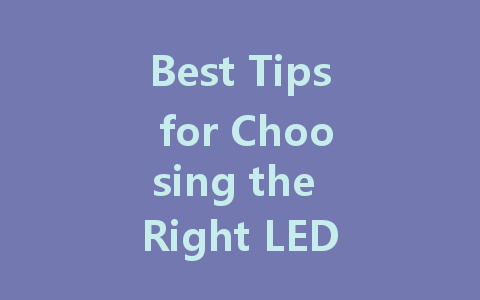
Selecting the perfect LED screen for your needs can be a daunting task with so many options available in the market today. Whether you need a screen for personal use, business presentations, or large-scale events, understanding the variations in technology and specifications will help you make an informed decision. In this article, we’ll discuss essential factors to consider when choosing an LED screen that suits your preferences and requirements.
Understand the Different Types of LED Screens
Before diving into specifications, it’s crucial to familiarize yourself with the different types of LED screens currently available. Generally, LED screens can be divided into several categories:
Each type offers unique advantages, so assess your environment and needs before settling on one.
Determine the Screen Size
Screen size is another vital factor that can impact your decision significantly. When selecting an LED screen, consider the following:
Check the Resolution
The resolution of an LED screen refers to the number of pixels it contains. Higher resolution screens provide clearer and more detailed visual content. Here are some common resolution types:
Consider what you’ll be using the screen for, and choose a resolution that ensures the content is clear and engaging.
Assess Brightness Levels
Brightness is a key factor when selecting an LED screen, especially for outdoor use. The brightness level is measured in nits, and here’s a general guideline:
Choosing the appropriate brightness will enhance viewing experience and ensure that your content is always legible.
Consider the Pixel Pitch
Pixel pitch refers to the distance between individual pixels; smaller pixel pitches result in higher resolutions, but they also increase costs.
Understanding pixel pitch is essential, as it directly affects display quality and overall satisfaction.
Evaluate the Connectivity Options
Modern LED screens offer various connectivity options. Ensure the screen you select has the required ports to work with your devices:
Choosing a screen with the right connectivity options will enhance its usability and versatility.
Final Thoughts
Selecting the right LED screen involves considering various factors, including the type of screen, size, resolution, brightness, pixel pitch, and connectivity options. By understanding your specific needs and assessing the available options, you can make an informed decision that enhances your visual experience.
Always remember to test the screen in person, if possible, to ensure it meets your expectations in various lighting conditions. With these tips in mind, you’ll be well on your way to choosing the perfect LED screen for your home, business, or event. Happy viewing!